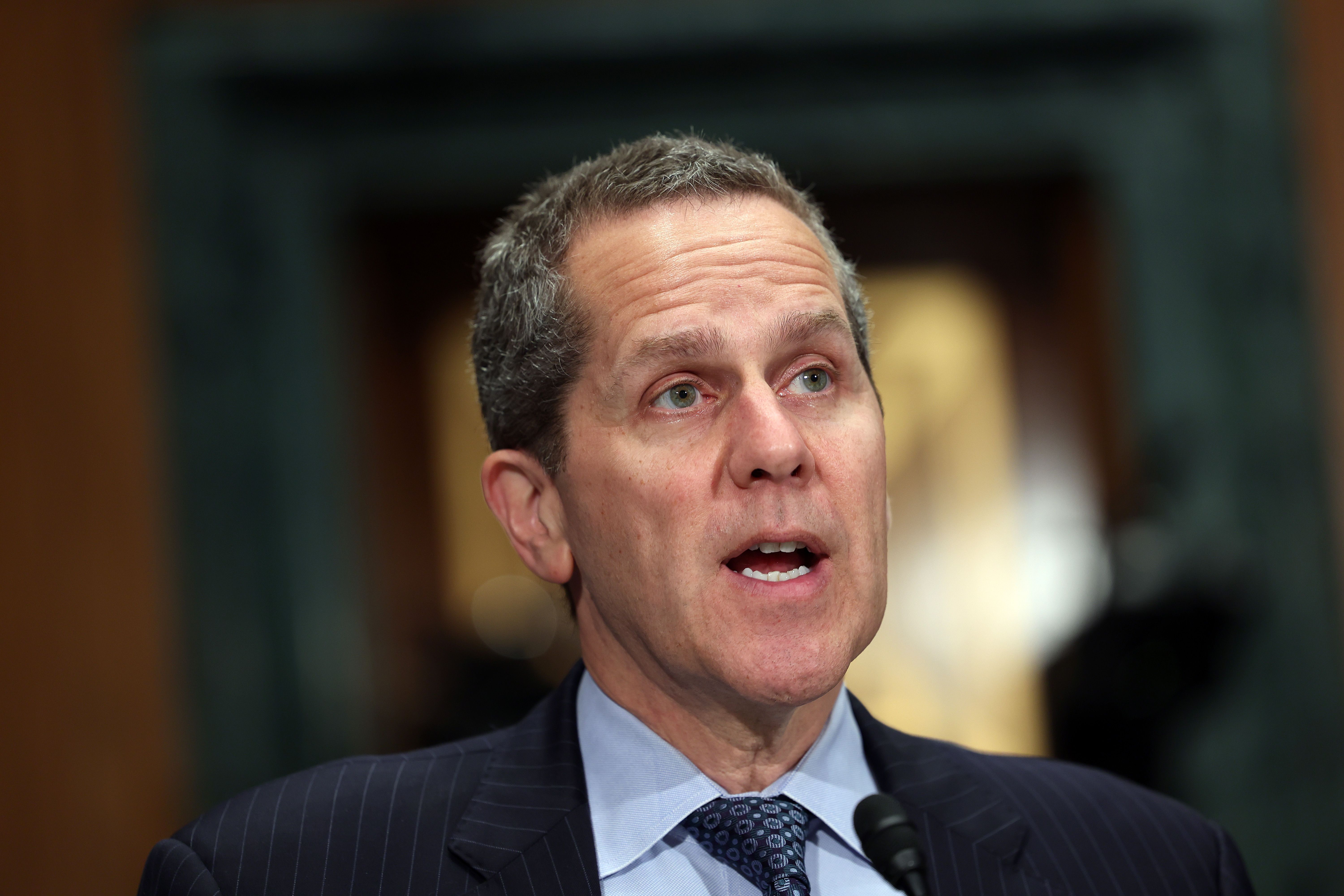Silver Ethereum cryptocurrency with candle stick graph chart and digital background.
After countless delays, the Ethereum “Merge” finally took place last week, switching the blockchain protocol from proof-of-work (PoW) to proof-of-stake (PoS).
What this means, in brief, is that Ethereum’s native coin, Ether (ETH)—the world’s second largest digital asset following Bitcoin (BTC)—can no longer be mined using a graphics processing unit (GPU). Instead, participants can choose to “stake” their ETH on the network. The Ethereum network then selects which of these participants, known as “validators,” gets to validate transactions, and if such validations are found to be accurate and legitimate, participants are rewarded with new ETH blocks.
So what’s the catch? Well, there are a couple of big ones: 1) To become a validator, participants must stake at least 32 ETH, the equivalent of $43,000 at today’s prices, and 2) They must stake them for years.
You can see, then, how the Merge has transformed ETH from a decentralized asset, available to any young gamer with access to a decent GPU, to more of a centralized, oligarchic asset, controlled by a relatively few participants who already own tens of thousands of dollars’ worth of ETH.
In fact, as CoinDesk reported last week, two large validators were responsible for over 40% of the new ETH blocks that were added in the hours post-Merge. Those validators are crypto exchange platform Coinbase and crypto staking service Lido Finance.
PoS Puts Ether In Regulators’ Crosshairs
But wait, there’s more. By converting to PoS, Ether risks being seen by U.S. regulators as a proof-of-security asset. Last Friday, the White House published its first-ever crypto regulatory framework, just a day after the Merge was completed.
Gary Gensler, head of the Securities and Exchange Commission (SEC), has said on numerous occasions that PoW assets such as BTC are commodities, not securities, and should therefore not be regulated as securities.
That’s not the case with PoS, according to Gensler. Last week, the SEC chief commented that digital assets that allow investors to stake their holdings in exchange for new coins may qualify them as securities. The implication, of course, is that oversight of these coins may end up being just as rigorous as that of stocks, bonds, ETFs and other highly regulated assets. Besides ETH, other popular PoS cryptocurrencies include Cardano, Polkadot and Avalanche.
The May crash of Terra’s Luna coin, which triggered the collapse of overleveraged crypto lenders such as Celsius, Voyager and Three Arrows Capital, was a major driver of this year’s crypto winter. Lenders’ promises of high returns on investment have landed them in financial and legal hot water. It’s very important that the Ethereum Foundation not make the same mistakes and invite the same level of scrutiny.
As we like to say at U.S. Global Investors, government policy is a precursor to…
Read More: www.forbes.com









 Bitcoin
Bitcoin  Ethereum
Ethereum  XRP
XRP  Tether
Tether  Solana
Solana  Dogecoin
Dogecoin  USDC
USDC  Cardano
Cardano  Lido Staked Ether
Lido Staked Ether  TRON
TRON  Avalanche
Avalanche  Wrapped stETH
Wrapped stETH  Sui
Sui  Chainlink
Chainlink  Toncoin
Toncoin  Shiba Inu
Shiba Inu  Stellar
Stellar  Wrapped Bitcoin
Wrapped Bitcoin  Hedera
Hedera  Polkadot
Polkadot  WETH
WETH  Bitcoin Cash
Bitcoin Cash  Uniswap
Uniswap  Pepe
Pepe  Litecoin
Litecoin  Hyperliquid
Hyperliquid  LEO Token
LEO Token  Wrapped eETH
Wrapped eETH  NEAR Protocol
NEAR Protocol  Ethena USDe
Ethena USDe  Internet Computer
Internet Computer  USDS
USDS  Aptos
Aptos  Aave
Aave  Render
Render  Mantle
Mantle  Bittensor
Bittensor  Cronos
Cronos  POL (ex-MATIC)
POL (ex-MATIC)  Ethereum Classic
Ethereum Classic  Artificial Superintelligence Alliance
Artificial Superintelligence Alliance  Virtuals Protocol
Virtuals Protocol  WhiteBIT Coin
WhiteBIT Coin  MANTRA
MANTRA  Arbitrum
Arbitrum  Monero
Monero  Tokenize Xchange
Tokenize Xchange